I'm trying to figure out the resistance of a burnt resistor in the PCB of a Hoover FD22G 011 (a cordless vacuum cleaner, with rotating brush; should be the same as the Deik ZB1516, which is the actual code on the PCB).
The resistor is marked as R27 (so it should indeed a resistor and not a similar-looking component), is between the negative battery terminal (B-) and the negative brush (not vacuum!) motor connector (SB-). It's ~4.5 mm in diameter, so it should be a 1 W resistor.
Despite being burnt (it left some horrible black marks on the PCB, plus the usual burnt resistor smell), some color bands are still visible. I'm quite certain about the black on the left, the red on the right, and I'm decently confident about the gold, second from right.
However, to me this doesn't make much sense, as AFAIK black cannot be neither the first nor the last band in a resistor! Same as the gold one - how can it be second or second to last?
To try to investigate this further, I tried to scratch a bit over the wire to measure the resistance between a terminal and several different windings. Bizarrely, I found very small resistance (under 0.2 Ω per winding, and I don't even know if I should trust my multimeter for such small values), which seems to me quite strange - such a big beast of resistance to introduce a minimum resistance on a DC motor? Doubly bizarre if we think that the crude contacts that bring the current from this PCB down to the brush will introduce more resistance than this...
Any idea?
Update: forgot to say, there's a similar, non burnt resistor in the circuit:
Sorry for the much lower quality photo, I don't have my camera with me now; the colors are a bit altered by the phone camera, but here the rings are definitely black, yellow, violet, silver and (most probably) brown.
The position in the circuit seems similar (it's between the negative battery terminal and the negative fan motor wire), so we can suppose it's a current sensing/limiting resistor as well, but unfortunately it isn't the same resistor - the power rating is lower for sure, as it's a little shorter and thinner (it's ~4 mm of diameter). However, this still sports:
- the initial black ring (so, it's not that it's charred in the burnt resistor) - so, maybe it's actually a leading zero?; in that case, this would make it a 0.47 Ω ± 1%;
- the shining ring, that here is clearly silver;
- the final ring, which is most probably brown, and it may be compatible with the orange-ish tint of the last ring of the burnt resistor.


